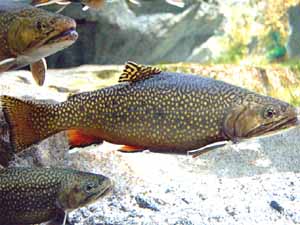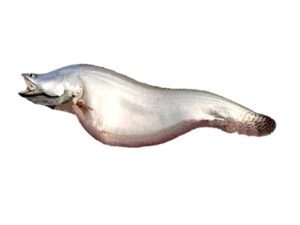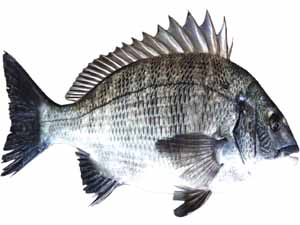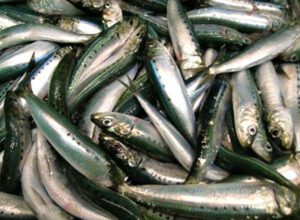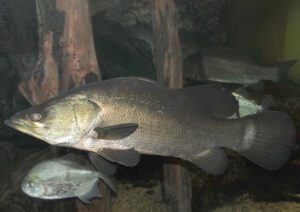Commercial catla fish farming business is gaining popularity day by day. Because catla fish is one of the very popular freshwater fish species which is raised throughout India, Bangladesh and some other South Asian countries.
Popularity of commercial catla fish farming is very high mainly due to it’s fast growth rate, great taste and nutrition and also high market demand.
Raising catla fish is very easy. And it’s natural habitat is rivers and canals. But the fish can be raised commercially in freshwater ponds.
Commercial catla fish farming in freshwater pond is very profitable and you can make high profit if you can do everything perfectly.
These fish grow very fast and they are very hardy. They also suitable for stocking with other fish species. Because catla fish generally consume feed from the surface level.
So, you can stock other fish species with catla fish which consume mid-level and bottom-level feeds, such as Rui (Rohu) or Mrigal (Mrigala). Mrigal consume feeds from the bottom level, and Rui fish take food from the mid level of the pond. So, while doing commercial catla fish farming, it is recommended to stock other fish species.
How to Start Catla Fish Farming
Starting catla fish farming is very easy, especially if you follow and do everything perfectly. Catla is a very fast growing fish species and it’s very easy to raise them in freshwater ponds.
Catla fish grows very well in temperature between 25°C and 32°C. However, here we are describing everything about starting commercial catla fish farming business.

Site Selection
First of all, select a very good site for catla fish farming where you are going to make the pond. It will be better if you can select a site which is free from noise and all types of pollution.
Pond Size and Construction
After selecting a good site, you have to make a pond for starting catla fish farming. The size of the pond can be any depending on your available land.
But a pond measuring around 1 acre will be very good for commercial catla fish farming business. And natural or earthen ponds are considered good for commercial fish farming business.
Pond Preparation
After making the pond, you have to prepare it for growing the fish to their full size. For preparing the pond, you have to apply both organic and inorganic fertilizers into it along with providing with supplementary feeds daily.
The application dosage of organic and inorganic fertilizers depends on the farming intensity and inherent productivity. You should contact your nearest aquaculture or fisheries institute for more information.
Seed Collection
Collect seed from any of your nearest catla fish breeding centers. Catla fish breeding is very common and induced breeding is playing a major role for entire seed requirement in all the countries where catla fish is available.
By the way, you should collect the seeds from any of your nearest hatcheries. You can contact your nearest agriculture extension office or any fisheries institute for having information about available catla fish breeding hatcheries in your area.
Rearing the Fingerlings
As we have mentioned above, you should not stock only catla fish in your pond. Rather, catla should be reared along with Mrigal and Rui.
For raising the fry in nursery pond, you can stock up to 0.1 to 0.2 million fry per acre pond.
Generally, 2.5 cm fry are raised in the nursery pond, and then you have to raise the fry until they reach around 10 cm length. And finally you can stock them to the main pond.
Stocking in the Main Pond
After raising the fry in the nursery pond, you have to stock them into the main pond. You can stock a total of 25,000 to 30,000 fish in an one acre pond. And the ratio of rui, catla and mrigal can be 30:30:40.
Feeding the Fish
Providing supplementary feeds is very important for commercial catla fish farming. Without providing adequate supplementary feeds, you can’t expect good growth of the fish.
Catla fish generally consume food from the upper level of water. They are natural food lovers and generally eat whatever insects of small plants float on the surface of the water.
But in case of commercial catla fish farming, you have to feed the fish with supplementary feeds. Generally, most of the farmers use ready-made commercial feeds for feeding their fish.
Total amount of feeds depend on the number of fish stocked in the pond. But the general rule is that ‘you have to feed the fish with 5% food daily of their total body weight’.
For example if you have stocked 10,000 fish and each fish weights 20 grams then you have to provide 10,000 grams (10,000×20/100×5) of food daily.
And also consider the mortality rate while determining total amount of food. And it’s recommended to feed the catla fish multiple times in a day rather than all at once.
Harvesting
You can expect to harvest your fish when they reach your desired size. But for better market value, you should wait until each fish reaches at least 1 kg body weight.
You can harvest the fish from pond by using the fishing nets. Generally, the catla fish has very good market demand when they reach about 1 to 2 kg body weight. By the way, harvesting can be done based on the size of the fish and also depending on market demand.
Marketing
You should not wait after harvesting. And you should send the fish for marketing immediately after harvesting them. Catla fish is very tasty and it has very good market demand, especially in the South Asian countries.
Catla fish is used for cooking fish curry, fish fry and even for making fish pickle. You should target your local market first for selling your products.
Total yield and profit from commercial catla fish farming business depends on various factors. And it’s very hard to tell the exact figure. But commercial catla fish farming is definitely very profitable and you can make good profit from this business if you can do everything perfectly. Hope this guide has helped you a lot. May God bless you!

